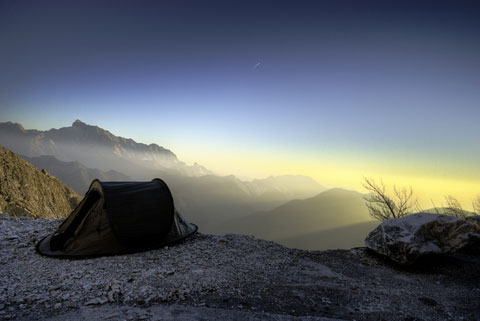
In Part 1, we discovered how to improvise shelter for living outdoors with moderate to severe multiple chemical sensitivities (MCS). I also provided a list of camping gear that will aid in surviving occasional snows, deep freezes, or torrential rains. Now I will cover the skills needed to see you through your first winter adventure.
Part 2: How to Keep Warm and Dry
The most important rule for winter survival is – STAY DRY. It’s central to everything you do when outdoor temperatures fall below 50 degrees Fahrenheit, the point at which it’s possible to develop hypothermia.
Wet or damp clothing from rain, body condensation, or accidently spilling a water bottle – could lead to major problems. The body loses heat at an increased rate when in contact with wet clothing. Damp blankets don’t stay as warm because they lose the essential air pockets which insulate from colder air.
It can be a major difficulty to keep dry when most waterproof fabrics are too toxic for use, but you must take great pains to do so.
Hypothermia:
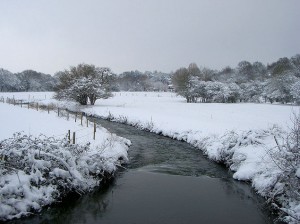
DRY = WARM and LIFE.
WET = COLD, HYPOTHERMIA or even DEATH.
It’s as simple as that. Take hypothermia seriously.
It can be difficult to warm up if you lack a direct heat source, which makes it important to recognize the signs of hypothermia early. Being dry isn’t proof against hypothermia, but it will improve your chances for survival. From How to Avoid Hypothermia:
“When someone’s re-warming reactions, like shivering, aren’t enough to overcome the cooling process, hypothermia can set in. Look for several important signs indicating the different stages of hypothermia.
• Mild Hypothermia: shivering, goose bumps, difficulty with complex motor skills
• Moderate Hypothermia: violent shivering, sluggish, speech problems, difficulty with fine motor skills
• Severe Hypothermia: rigid muscles, dazed, shivering has stopped, blue skin, erratic heartbeat, unconscious
If severe hypothermia sets in, complications can include coma and even death. Other cold weather injuries are also associated with hypothermia, such as frostbite, chilblains (ulcers on the toes) and trench foot (a foot infection).”
Rain Gear:
 Finding MCS tolerable rain wear is difficult. Almost all raincoats and pants use polyurethane or DWR for waterproofing. Even the more expensive fabrics such as Gore-Tex use these chemicals. A new fabric called eVent may be less toxic as it uses a different technology than Gore-Tex and other coats. Unfortunately, it relies on a DWR finish as the first step in water repellency, but this could potentially wash out of the fabric while still offering some protection. The steep price of these high-tech fabrics has made personal testing impossible.
Finding MCS tolerable rain wear is difficult. Almost all raincoats and pants use polyurethane or DWR for waterproofing. Even the more expensive fabrics such as Gore-Tex use these chemicals. A new fabric called eVent may be less toxic as it uses a different technology than Gore-Tex and other coats. Unfortunately, it relies on a DWR finish as the first step in water repellency, but this could potentially wash out of the fabric while still offering some protection. The steep price of these high-tech fabrics has made personal testing impossible.
If price and toxicity make new rain wear impractical, there are other options. A cheap polyethylene poncho is less toxic after limited airing. It’s also possible to fashion a cape using various materials. My homemade capes are garbage bags that were split open along one side. It covers my shoulders and back easily; when pulled closed in front it provides full torso rain protection. Using a binder clip keeps it closed while moving around. Capes used to be highly fashionable and can still be a useful way to stay dry.
I have found that garbage bags made for industrial or restaurant use, instead of home kitchen use, are often an opaque plastic that’s much less toxic. Their larger sizes and heavier densities add usefulness to the bag far beyond holding trash. They can be bought online or at restaurant supply stores. When camping in a wet environment, using plastic bags to store belongings outside a small tent frees up more living space.
Getting Dry:
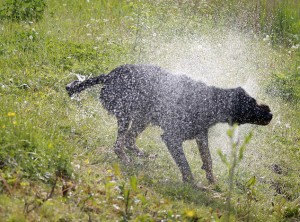 Becoming wet when there is no direct heat source makes it challenging to get dry again. Changing into dry clothing is the obvious answer, but many homeless people don’t have extra clothes. If there is no dry clothing to change into, body heat is often the answer.
Becoming wet when there is no direct heat source makes it challenging to get dry again. Changing into dry clothing is the obvious answer, but many homeless people don’t have extra clothes. If there is no dry clothing to change into, body heat is often the answer.
Start producing easily sustained body heat, sometimes for an hour or more. Moderately damp clothing can be safely dried while wrapped in blankets to save heat. Small repetitive movements, such as squeezing your butt cheeks, can produce a surprising amount of heat over time. Gentle movements don’t disturb the blankets as much, and keeps them from losing heat. A small opening which admits a continual cold airflow can keep you chilled.
If possible, don’t wear soaked clothing when wrapped in blankets to dry it. Instead, stay active as much as possible without getting more wet. Exercises such as sit-ups can work well inside a small tent. Keep in mind that you don’t want a wet bed to sleep in that night, so dry up some before crawling under covers.
Towels can help mop up problems, but if they can’t be dried they usually mold. In these situations, another option is needed. For those who can tolerate it, paper towels are a good means to get dry and keep dry anything which becomes wet.
Staying Warm:
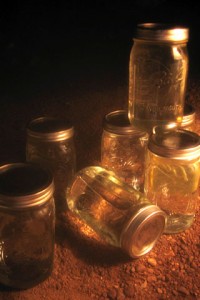 Warm liquids and food can be a lifeline at times. My first night homeless was at the start of a deep cold spell. I had been well prepared, but lost all my gear the day before to another toxic exposure. That night I drank hot broth, huddled under too few blankets. Only broth and body heat stood between me and hypothermia.
Warm liquids and food can be a lifeline at times. My first night homeless was at the start of a deep cold spell. I had been well prepared, but lost all my gear the day before to another toxic exposure. That night I drank hot broth, huddled under too few blankets. Only broth and body heat stood between me and hypothermia.
You must keep hydrated and fed, so your body will produce more heat. On the other hand, don’t drink too much cold water all at once. If unable to heat drinking water, small sips add up over time and won’t drop body temperature as much.
An old piece of wilderness advice is that a full bladder will make you colder, because there is less heat going to your vital organs.
Often a heater isn’t an option for those with severe MCS, and even less of a choice in a tent. First, heaters in a tent can be a HUGE FIRE HAZARD. If you plan to use one, BE CAREFUL. Second, if leaving the windows open year-round for fresh air (as I do), it makes little sense to heat air with cold breezes blowing through it.
Finding a way to heat your bed can be easier than heating the entire tent. A heating pad could work, as could electric blankets. Unfortunately, both can cause electromagnetic problems in many people and are often best avoided. Rocks or bricks heated beside a fire, in hot water, or an oven are an alternative. However they can be dangerous; it‘s easy to burn not only yourself, but also to burn or melt your bedding.
Canning jars filled with hot water can provide an enormous amount of heat. This can be done by boiling water or if there is access to a hot water tap. Although they pose a possible water hazard by leaking or breaking if mishandled, this is minimized with careful use.
Part 3: Camping basics
Camping is about more than having the right equipment. It is also about knowing how to accomplish everyday tasks while in a wilderness setting. This includes simple jobs easily taken for granted such as taking a shower, drinking a glass of water, or turning on a light at night.
Bathing:
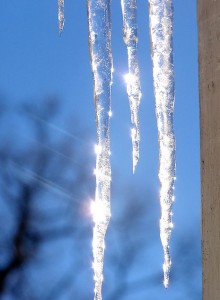 It’s not practical to shower daily while camping unless there’s access to full bathrooms which are safe for people with MCS. Sponge baths become the preferred way to get clean, especially in winter. If needing a more complete wash, don’t shower or sit in unheated water. Instead wash one body part at a time, using minimal water if it’s cold or if there is limited hot. Start at the top because as parts become clean and quickly dried off, there is less risk of getting wet again. Wet skin will be much colder and risks hypothermia if not dried quickly.
It’s not practical to shower daily while camping unless there’s access to full bathrooms which are safe for people with MCS. Sponge baths become the preferred way to get clean, especially in winter. If needing a more complete wash, don’t shower or sit in unheated water. Instead wash one body part at a time, using minimal water if it’s cold or if there is limited hot. Start at the top because as parts become clean and quickly dried off, there is less risk of getting wet again. Wet skin will be much colder and risks hypothermia if not dried quickly.
For the first three years I was in a tent, each week I went grocery shopping it would mean a full body wash with cold water when I returned home. At times this meant using a stick to break through the top layer of ice that had formed on my wash water while I was away. Without any way to heat a useful amount, I had to bathe with ice water. I don’t recommend this unless there is no alternative.
Despite currently having a hot-water heater to provide ample heat, those memories of ice and cold still haunt me when I shower each winter.
Latrines:
Improper management of urine and feces can easily become a serious health hazard. In many areas it’s illegal to dig pit toilets or latrines due to the risks they pose when improperly done. However, in more remote areas it’s often the only option. Alternatives to a hand dug latrine include a humanure compost pile, composting toilet, or outhouse. Check with the local building permit office to find which of these are legal in your area.
When answering the call of nature outdoors it’s important to keep away from all water sources. In Western culture, the bathroom is a major water area in the house, but it’s much different in nature. Fecal contamination of the water supply is a real hazard; it’s the main cause of E. coli outbreaks from produce. There are several websites which talk about this topic in great depth so I will cover only the basics here.
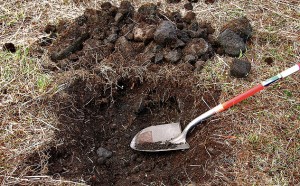 Use a shovel to build a latrine, although sticks or other tools work for smaller cat holes. When digging cat holes or full latrines, stay at least 200 feet from water sources. This means rivers, ponds, the faucet you get your water from, or any other water source. If there’s water, it’s a water source (minus the obvious puddles). If the campsite is used long term, plan out where to put your latrine holes to maximize the space for them.
Use a shovel to build a latrine, although sticks or other tools work for smaller cat holes. When digging cat holes or full latrines, stay at least 200 feet from water sources. This means rivers, ponds, the faucet you get your water from, or any other water source. If there’s water, it’s a water source (minus the obvious puddles). If the campsite is used long term, plan out where to put your latrine holes to maximize the space for them.
While digging, keep in mind what body position will be used at the hole later. Dig it narrow enough that feet can be comfortably placed on either side of the hole, about the width of the shovel – you don’t want to fall in later because of poor footing. Dig as deep as the soil or shovel will allow. Poor soil will only allow a shallow trench; good soil will allow for several feet deep.
Keep the dirt removed while digging in a tidy pile beside the hole; it will be used later for covering solid waste. Ashes from wood burning stoves or campfires also work and help prevent odors.
Putting down small branches (an inch or more in diameter) or boards along the sides of the hole where feet will rest can make the experience safer and more comfortable. Not only can slipping bring you quickly in contact with goo, but it can also cause injury. Take the extra time to make the hole safe and comfortable for many uses.
Clean Drinking Water:
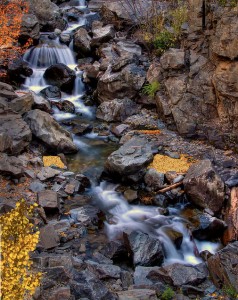 Safe drinking water is something you hear all the time, but what does it mean? Being doubled over in extreme gut pain from contaminated water can make the meaning crystal clear. Depending on location, many types of bacteria, parasites, and viruses can be in the water – regardless of how clean it looks.
Safe drinking water is something you hear all the time, but what does it mean? Being doubled over in extreme gut pain from contaminated water can make the meaning crystal clear. Depending on location, many types of bacteria, parasites, and viruses can be in the water – regardless of how clean it looks.
It’s easy to purify water. First, make sure to take it from a fresh source. Stagnant, murky, mossy, or heavily muddied water areas are not safe water sources. A good backpacking filter pump can make some of these drinkable, but they can be expensive due to maintenance needs. Running water from a stream, creek, or a lake that isn’t stagnant smelling is freshwater.
The most common method for sterilizing water is to boil it. Make sure to boil enough for the entire day. Boiling water for at least 3 minutes kills parasites, bacteria, and viruses without substantial water loss from steam.
There are alternatives to boiling that also sterilize drinking water. A backpacking water filter (not Brita style for countertops) can work in most situations, but some filters are not proof against all parasites, bacteria, or viruses. Treating water with chlorine or iodine can work against most of these common problems, but drinking this continuously is a health hazard for those with health conditions.
Boil your water, it’s safe and easy.
Lighting:
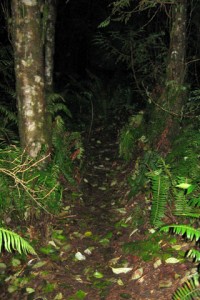 A good light source is needed when camping without electricity. Most choices are more toxic than the common flashlight. A simple handheld flashlight will work, but a headlamp provides hands free use and often a much longer battery life. Decent headlamps can be found for $30 or less. The increased battery and bulb life of most headlamps make them a good investment despite the initial cost.
A good light source is needed when camping without electricity. Most choices are more toxic than the common flashlight. A simple handheld flashlight will work, but a headlamp provides hands free use and often a much longer battery life. Decent headlamps can be found for $30 or less. The increased battery and bulb life of most headlamps make them a good investment despite the initial cost.
Try to buy one that runs on AAA batteries as these will be much cheaper and easier to replace. Rechargeable batteries may be possible even without electricity at camp if creative means are used for charging them.
Candles are another choice, but can be toxic depending on wick and wax mixtures used. They also fall into the fire hazard category while used in a tent and can pollute the air inside. Gas or oil lanterns have similar problems. Some lanterns use batteries, but these are heavy consumers of power and thus not economically sound for extended use.
The Spice of Life:
My last advice is to be creative! Almost everyone has a general knowledge of the stories “Robinson Crusoe” and “Swiss Family Robinson.” Shipwrecked with little more than a pocketknife and a flint, tales of adventure and survival – they easily captivate the imagination with their ingenuity and romance. If you have been thrust into an outdoor environment with nothing but a tent, pocketknife, and some bedding don’t despair.
Get creative!
Every item you bring or find in nature may easily have more uses than the most obvious ones. Let your imagination run wild and see what can be built to make life easier and more enjoyable.
Life outdoors can be a deeply rewarding experience.
Further information:
• Jaguar Plastics Commercial Can Liners – Strong and versatile bags.
• OA Guide to Water Purification explains about boiling or otherwise treating drinking water. It deals primarily with backpacking scenarios but the information is applicable anywhere.
• Safer Camping Equipment – An article by J. Camphill on her experiences with camping equipment for people with MCS and electrical sensitivities.
read Part 1:
The MCS Survivalist Guide: Tent Living – Part 1
photo credits: Tent Living Part 2 © Jborzicchi/Dreamstime.com | Snow River © Between a Rock at flickr | Main in Raincoat with Mask © Ricardo Saraiva/Dreamstime.com | Wet Dog © Marjolein at flickr | Canning Jars for Warmth © Lisa Pausmann | Icicles © Liz West at flickr | Try Digging © Tommy Sea at flickr | Bear Creek © John Fowler at flickr | After Dark © Lisa Pausmann

Photos by flickr contributors licensed under a Creative Commons Attribution-ShareAlike 3.0 Unported License







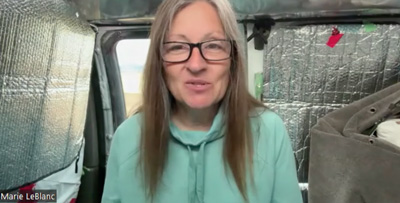
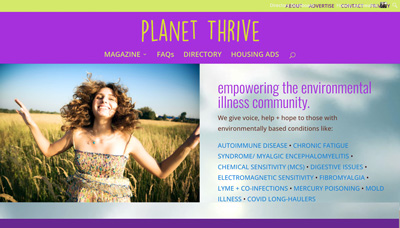
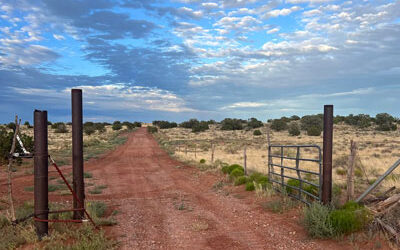
Lisa Pausmann, J. Camphill, Julie Genser:
Thank you for this very valuable information.
Not much seems immediately do-able, but these are very valuable resources.
-Sue
You are very welcome Sue! :)